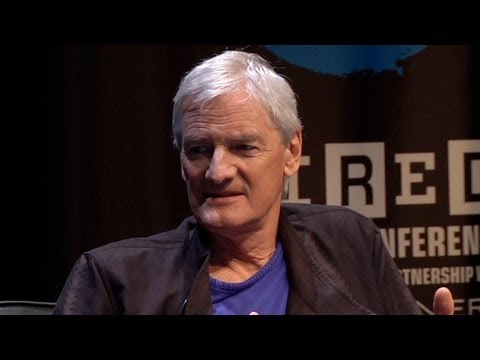The Beauty and Power of Mathematics: Insights from a Mathematician
Summary
In this Q&A, mathematician Moon Duchi shares insights on various topics related to mathematics, including the development of zero, algorithms, imaginary numbers, and the collaborative nature of math research. The speaker also discusses breakthroughs in mathematics, consensus building in the field, and the interesting mathematicians often overlooked in history. Additionally, the speaker addresses various questions related to mathematical concepts such as the order of operations and the use of letters in equations. Finally, the speaker delves deep into the complex nature of mathematical theories surrounding points and lines, as well as the controversial history of their development.
Table of Contents
- The Importance of Algorithms
- The Development of Zero
- Imaginary Numbers in Real-Life Structures
- Breakthroughs in Mathematics: Why Don’t We Hear About Them More Often?
- Consensus Building in Mathematics
- Interesting Mathematicians in History
- Addressing Common Questions and Misconceptions About Mathematics
- The Deep and Complex Nature of Mathematical Theories Surrounding Points and Lines
Introduction
Mathematics is a fascinating and powerful discipline that has influenced everything from the natural sciences to philosophy. Despite this, many people find math intimidating or boring, and the field often fails to generate the publicity it deserves. In this Q&A session, we sit down with mathematician Moon Duchi to discuss various topics related to mathematics and gain insights into the beauty and power of this often-overlooked discipline.
Q&A
The Importance of Algorithms
Questioner: Could you explain what an algorithm is and why they are important?
Moon Duchi: Sure. Algorithms are a set of instructions that can be followed to solve a particular problem or complete a task. They are used everywhere, from computing to everyday life. For example, when you log into your social media account and see personalized recommendations, that’s the result of an algorithm. They are important because they help us streamline processes, save time and resources, and make complex tasks easier to manage.
The Development of Zero
Questioner: I’ve heard that zero was not always recognized as a number. Could you tell us more about the development of zero and its significance?
Moon Duchi: Yes, zero was not recognized as a number in the same way that we understand it today for a long time. Different cultures and civilizations had their own ways of representing nothingness. It wasn’t until around 500 A.D. in India that zero was recognized as a number and included in mathematical calculations. It then spread to the Arab world and eventually to Europe. The significance of zero is astronomical, because without it, much of modern mathematics would not exist. It is also a symbol of the development of human reasoning, because the idea of nothingness in itself is abstract and requires advanced cognitive abilities to understand.
Imaginary Numbers in Real-Life Structures
Questioner: I’ve heard that imaginary numbers are used in real-life structures like bridges. Can you explain the significance of this?
Moon Duchi: Yes, imaginary numbers are used in many real-life structures and engineering applications that may surprise you. They are used to represent certain physical phenomena that cannot be directly measured, such as alternating current in electrical engineering or harmonic motion in mechanics, to name a few. In fact, some of the most innovative and beautiful buildings and bridges in the world are built with the help of complex numbers.
Breakthroughs in Mathematics: Why Don’t We Hear About Them More Often?
Questioner: There are always breakthroughs happening in mathematics, but why don’t we hear about them more often?
Moon Duchi: That’s a great question. Mathematics is often seen as esoteric and difficult to understand, so it doesn’t always generate the same kind of hype or excitement as other fields. Additionally, many mathematical breakthroughs are incremental and build upon previously established theories, which can make them seem less groundbreaking. However, mathematics is still making huge strides, whether it’s in solving long-standing mysteries like Fermat’s Last Theorem or in the development of cutting-edge software and algorithms.
Consensus Building in Mathematics
Questioner: How does consensus building work in mathematics?
Moon Duchi: Consensus building is a crucial aspect of the mathematical community. When a conjecture or theory is proposed, it undergoes intense scrutiny and critique from other experts in the field. In order for a theory or conjecture to be widely accepted and used, it must be able to withstand this scrutiny and be supported by a body of evidence. Consensus is built through this process of critique, evidence, and peer-review.
Interesting Mathematicians in History
Questioner: Who are some of the lesser-known mathematicians in history that you find interesting?
Moon Duchi: There are so many interesting mathematicians throughout history that it’s hard to choose, but two that come to mind are Felix Hausdorff and Emmy Noether. Hausdorff was a German mathematician who contributed greatly to topology, while Noether was a pioneering woman in the field who worked on abstract algebra and theoretical physics. Both faced obstacles due to their identity, but their work has had a huge impact on modern mathematics and science.
Addressing Common Questions and Misconceptions About Mathematics
Questioner: I’ve always had trouble with the order of operations. Could you explain how that works?
Moon Duchi: Sure. The order of operations is a set of rules that dictate the order in which mathematical operations should be performed. Generally, the acronym PEMDAS is used to remember the order: parentheses, exponents, multiplication and division (performed left to right), and addition and subtraction (performed left to right). Essentially, this means that you should always perform operations within parentheses before any other operation, and then move on to exponents, multiplication and division, and finally addition and subtraction.
Questioner: Is zero odd or even?
Moon Duchi: Zero is an even number. This is because even numbers are defined as any integer that can be divided by 2 without a remainder, and 0 can be divided by 2 without a remainder.
Questioner: Why do we use letters in equations?
Moon Duchi: We use letters in equations to represent variables, which can represent any number or value. This allows us to create general formulas and rules that apply to any instance of the variable. For example, in the equation y = mx + b, we use y and x as variables to represent any value of those quantities. This allows us to generalize the equation and apply it to any context where those variables may have different numerical values.
The Deep and Complex Nature of Mathematical Theories Surrounding Points and Lines
Questioner: Could you describe the complex nature of the theories surrounding points and lines?
Moon Duchi: Points and lines may seem like simple concepts, but their mathematical theory is actually quite deep and complex. For example, the idea of dimensionality and the relationship between points and lines are still unresolved questions in mathematics. Additionally, the history of the development of ideas around points and lines is controversial and fraught with conflict. Despite these complexities, studying these theories can reveal incredible insights into the nature of mathematics and the world we live in.
Conclusion
Mathematics is a fascinating and powerful subject that is often overlooked or misunderstood. In this Q&A, we’ve gained insights into various topics related to mathematics, including the development of zero, the use of algorithms, imaginary numbers in real-life applications, and the complex nature of mathematical theories. We’ve also addressed common questions and misconceptions about mathematics and learned about some lesser-known but interesting mathematicians throughout history. Through these insights, we can gain a deeper appreciation for the beauty and power of mathematics and the incredible insights it can offer us.







